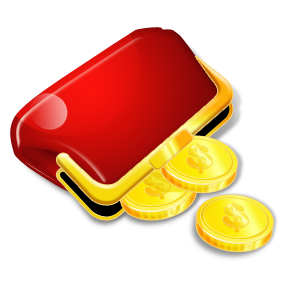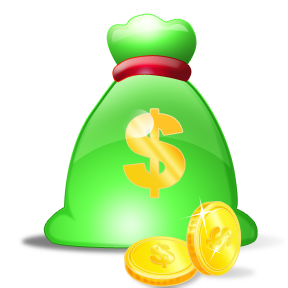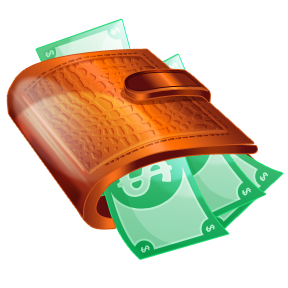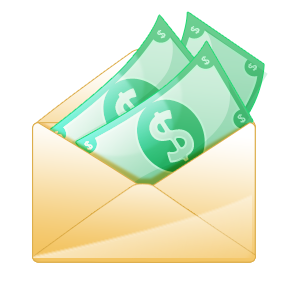Budget Saving Tips
To begin making a budget, list all the monthly bills, bi-annual bills, and annual bills.
Some of the most common bills may include insurance, electricity, mortgage, car payment, food, home and cellular phones, internet/cable, water, gasoline, natural gas, and school lunches/supplies.

Estimate your monthly payment and subtract from your income. Whatever is left can be used for non-necessities like entertainment and dining out.
Track all your spending for one month. At the end of the month see where you can cut excess spending and instead put that money in savings.
Tips on Building a Savings
Build a rainy-day fund and use it to borrow from yourself to save on credit card interest or payday loan fees. Put money into an emergency savings account, ideally equal to 3-6 months of living expenses. Save the change that ends up in your pockets, purse, the laundry or under couch cushions. Once a month deposit the change into a high yield savings account. You’ll be surprised at the amount you can deposit.
Open your checking and savings accounts at a credit union or get an even higher interest rate by opening an Online Savings Account through an FDIC insured bank. You’ll pay half the fees and earn more interest on your money.
When you are saving, always have a goal. If you save just because you think you should, it will be easy to steal from your savings. Have a savings account for emergencies, retirement, or large purchases. Then you have a plan of where your money is going to be spent.
Tips for Paying Yourself

An easy way to save is to set up an automatic withdrawal from your checking to your savings account. You can find a list of FDIC insured healthy banks with high yield savings at RateCatcher.com. It only takes 5 minutes to get an account. Start saving for your future now. With scheduled regular transfers from your checking, you can watch your savings grow without lifting a finger.
One way to begin saving is to pay yourself first. This means that when you get your pay check you put a prearranged amount in a savings account before you pay the bills. Give yourself weekly allowances. Focus on your allowance and how you can get the most out of it. Deposit the rest of the money into a savings account. It will come in handy when you really need it.
Automatically split your paycheck into needs, wants and savings. Savings could also be split into emergency fund and retirement.
Impulse buying can cost you a lot of money. Never purchase expensive items without writing down the reasons why you need to have them or pondering about the purchase for at least 24 – 48 hours.
The old saying “waste not, want not” is true. Just put it to the test by unpluging all devices not in use, include appliances, TV’s, and chargers for cell phones, for a month and calculate the savings. Bounce one fewer check each month. The $20-30 you save by not bouncing one check a month would save you enough money to nearly fully fund a $500 emergency savings account.
Tips on Credit/Debt Savings Make your monthly credit card payment on time. The $30-35 you save by not being charged a late fee each month on one card would save you most of the money you need for $500 in emergency savings”
Turn a debt payment into a deposit. If you pay off a debt, such as the outstanding balance on a credit card, or if you make the last loan payment on your car, keep making the monthly payment—not to your lender, but rather into your savings account.
Money Saving Tips on Mortgages
Save a few weeks interest by paying your mortgage earlier in the month. Split your mortgage payment in half and pay that amount every two weeks, instead of once a month. You will pay the same monthly amount, but probably take between 7 and 10 years of payments off your mortgage, saving a huge amount of money.
Savings Tips on Insurance
It pays to shop around. Get at least three price quotes. Check the financial health of insurance companies with rating companies such as A.M. Best (http://www.ambest.com) and Standard & Poor’s (http://www.standardandpoors.com/) and consult consumer magazines. Save money on your insurance by increasing your deductible. If you are scared about having a higher deductible, put the savings in a savings account and after two to three years you should have the difference saved.
Don’t buy insurance on small amounts (such as trip cancellation, and extended warranties). “Self-insure” by keeping a savings account for those occasional losses. Consolidate your insurance bills to one provider: Most insurance companies give significant discounts if you have home and car insurance with them. Also consider umbrella insurance – sometimes the savings outweigh the cost of the umbrella insurance.
Reduce coverage on older cars. Maintain a good credit record. Take Advantage of Low Mileage Discounts Some companies offer discounts to motorists who drive a lower than average number of miles a year. Low mileage discounts can also apply to drivers who car pool to work.
Other Discounts: When you comparison shop, inquire about discounts for the following:*
[ ] $500 deductible
[ ] $1,000 deductible
[ ] More than 1 car
[ ] No Accidents in 3 Years
[ ] No Moving Violations in 3 Years
[ ] Driver Training Courses
[ ] Defensive Driving Courses
[ ] Anti-Theft Devices
[ ] Low Annual Mileage
[ ] Air Bags
[ ] Anti-Lock Brakes
[ ] Daytime Running Lights
[ ] Student Drivers with Good Grades
[ ] Auto and Homeowners Coverage with the Same Company
[ ] College Students away from Home
[ ] Long-Time Customer
[ ] Other Discounts
These savings tips brought to you by: RateCatcher.com “An ounce of savings today is worth a pound of gold tomorrow.”
